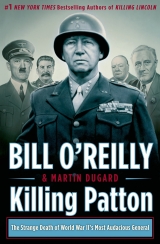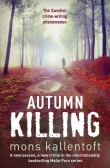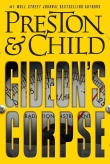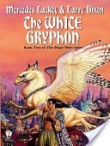
Текст книги "Killing Patton"
Автор книги: Bill O'Reilly
Жанр:
Военная история
сообщить о нарушении
Текущая страница: 24 (всего у книги 25 страниц)
Sources
Researching this book was an adventure.
The journey began in the German town of Heidelberg, with a visit to the hospital room at Nachrichten Kaserne where Patton died. Shane Sharp, the base’s public affairs officer, arranged for Major Aaron Northup to conduct a brief tour of the facility, allowing our first hands-on glimpse into the places visited by George S. Patton in the final years of his life.
After that simple and somewhat poignant beginning, the research careened all over Europe and through parts of America, as Hitler, Stalin, Churchill, Roosevelt, Eisenhower and many of the other influential figures that grace these pages demanded their own levels of in-depth investigation. Some of this was a straightforward dig into various archives, museums, and official U.S. Army battlefield histories. In particular, the Central Intelligence Agency, the presidential libraries of Franklin Roosevelt and Harry Truman, and the National Archives were of great assistance. This history is still close enough to the present time that two key figures in this book, Abe Baum and Manfred Rommel, passed away during the research process. As with many other figures in this book, their newspaper obituaries provided important background information. These are all standard sources for historical research. However, there were also several unexpected sources that helped bring the past to life.
Among them was the George S. Patton Memorial Museum at Chiriaco Summit in California’s Mojave Desert, with its vast and diverse amount of Patton memorabilia, including several tanks displayed in the desert surrounding the museum. Also, the Topography of Terror Museum in Berlin offered a chilling look into Nazi Germany. It is built atop the former site of Gestapo headquarters, next to a small remaining section of the Berlin Wall. And, of course, the site of Patton’s grave in Luxembourg was powerful in its elegant simplicity.
The city of Bastogne is not the commercial crossroads it was in 1944, but it pays homage to the Battle of the Bulge and its American defenders each year on the anniversary of the battle. The 101st Airborne’s former barracks and site of General McAuliffe’s headquarters is an operational military facility that sometimes opens its gates for tours. And while it is not to be found on any map, Fort Driant still exists in the hills above Metz, slowly being reclaimed by the forest. It is possible to walk the battlefield, following the path of Easy Company and Baker Company—though this is roundly discouraged by the locals due to the large amounts of unexploded ordnance. Open doorways and tunnels allow the adventurous to step inside Fort Driant’s Wehrmacht gun emplacements and see for themselves the thickness of the fort’s concrete walls.
Katerina Novikova, director of press relations at Moscow’s Bolshoi Theater, was very helpful in passing along the ballet’s program for the night in October 1944 when Olga Lepeshinskaya danced for Winston Churchill and Joseph Stalin. And Aleksandra Perisik-Green in the House of Commons Information Office was no less dogged in finding the meeting minutes for the day on which Churchill eulogized Franklin Roosevelt, allowing us to pinpoint the exact time that heartfelt speech began.
It is ironic that the people who make history are some of the most bold, courageous, and passionate people that have ever walked the earth, but that the actual writing of history is often so fact driven that all emotion is deflated from the telling of a person’s life story. So it is interesting that most literature about George Patton breaks from this tradition and displays a subcurrent of deep empathy for the general. It says a great deal about the power of Patton’s personality and the tragedy of his early demise.
There is a vast body of excellent literature about Patton, so there was no shortage of published resources. War As I Knew It, Patton’s published journals, was a constant source of information and insight, as was The Patton Papers, which expanded his personal writings in a way that gave them context. Beyond the words of Patton himself, the writings of Carlo D’Este (the excellent Patton: A Genius for War), Martin Blumenson (Patton and The Patton Papers), Ladislas Farago (The Last Days of Patton), and Brian Sobel (The Fighting Pattons) were particularly helpful. Each of them writes of Patton as if they knew him (which was actually the case with Blumenson, who served as staff historian for Patton’s Third Army). For specifics about the conspiracy theories surrounding Patton’s death, the writing of Robert K. Wilcox (Target: Patton) was very helpful.
What follows is a list of sources that helped with the research for this book. It is lengthy but hardly exhaustive, because hundreds of sources were called upon.
World War II has been written about extensively, but Cornelius Ryan’s The Last Battle and Rick Atkinson’s Guns at Last Light are loaded with detail and action. The Victors, by Stephen E. Ambrose, takes the reader onto the battlefield through the eyes of ordinary soldiers, and in vivid fashion. For a look at the war from a command point of view, Omar Bradley’s A Soldier Story is self-effacing and an easy read. While there are too many books detailing the war to list in this space, some that were very helpful in providing background nuance include Darkness Visible: Memoir of a World War II Combat Photographer, by Charles Eugene Sumners; World War II in Numbers, by Peter Doyle; Patton, Montgomery, Rommel: Masters of War, by Terry Brighton; The Nuremberg Trials: The Nazis and Their Crimes Against Humanity, by Paul Roland; and The Battle for Western Europe, Fall 1944: An Operational Assessment, by John A. Adams. Wild Bill Donovan, by Douglas Waller, proved to be the definitive source on the OSS chief; also useful on the topic were The Jedburghs: The Secret History of the Allied Special Forces, France 1944, by Will Irwin; and OSS Against the Reich: The World War II Diaries of Colonel David K. E. Bruce, by David Kirkpatrick Este Bruce.
Metz was written about in spectacular fashion by Anthony Kemp in The Unknown Battle: Metz, 1944, and Steven J. Zaloga with Metz 1944 and Lorraine 1944. The Battle of the Bulge is another milestone of the war that has been covered at great length, but the books we relied on were Robert E. Merriam’s The Battle of the Bulge; Troy H. Middleton: A Biography, by Frank J. Price; Battle: The Story of the Bulge, by John Toland; 11 Days in December: Christmas at the Bulge, 1944, by Stanley Weintraub; Alamo in the Ardennes, by John C. McManus; Against the Panzers: United States Infantry versus German Tanks, 1944–1945, by Allyn R. Vannoy and Jay Karamales; The Ardennes on Fire: The First Day of the German Assault, by Timothy J. Thompson; Fatal Crossroads: The Untold Story of the Malmedy Massacre at the Battle of the Bulge, by Danny S. Parker; The Ghost in General Patton’s Third Army: The Memoirs of Eugene G. Schulz During His Service in the United States Army in World War II, by Eugene G. Schulz; Battle of the Bulge 1944 (2): Bastogne, by Steven J. Zaloga; and the underrated Once Upon a Time in War: The 99th Division in World War II, by Robert E. Humphrey.
Adolf Hitler is modern history’s best-known madman, so to step inside his world is frightening, to say the least. It helped to follow the research of other writers who had gone there already, including firsthand accounts by Otto Skorzeny (Skorzeny’s Special Missions: The Memoirs of Hitler’s Most Daring Commando) and Traudl Junge (Hitler’s Last Secretary: A Firsthand Account of Life with Hitler). In addition, Inside Hitler’s Bunker: The Last Days of the Third Reich, by Joachim Fest; Hitler, by Joachim Fest; Hitler, by Robin Cross; and Hitler: A Biography, by Ian Kershaw were all spectacular.
The Big Three Allied leaders were vital to telling this story properly, and their prominence ensured that a great amount of archival detail was available to document their movements and thoughts. Books of note were The Lesser Terror: Soviet State Security, 1939–1953, by Michael Parrish; Joseph Stalin: A Biographical Companion, by Helen Rappaport; The FDR Years, by William D. Pederson; My Dear Mr. Stalin: The Complete Correspondence of Franklin D. Roosevelt and Joseph V. Stalin, edited by Susan Butler; No Ordinary Time: Franklin & Eleanor Roosevelt: The Home Front in World War II, by Doris Kearns Goodwin; Defending the West: The Truman-Churchill Correspondence, 1945–1960, edited by G. W. Sand; The Last Thousand Days of the British Empire, by Peter Clarke; and The Road to Berlin, volume 2 of Stalin’s War with Germany, by John Erickson.
Thanks to these authors, and to those whose books are not mentioned but whose research aided in building this narrative.
Acknowledgments
My assistant Makeda Wubneh and literary agent Eric Simonoff were invaluable in helping me write Killing Patton with Marty Dugard, the best researcher I have ever known.
–BILL O’REILLY
* * *
Thanks to Eric Simonoff, the world’s greatest agent. To Bill O’Reilly, a master storyteller and all-around great guy from whom I have learned so much. And, as always, to Callie: You are my sunshine.
–MARTIN DUGARD
Illustration Credits
Maps by Gene Thorp
© Bettmann/CORBIS
© Berliner/Verlag/Archiv/dpa/Corbis
Archive Photos/Getty Images
Popperfoto/Getty Images
Hulton Archive/Getty Images
AP Images
© Hulton-Deutsch Collection/CORBIS
National Archives
Mondadori via Getty Images
Mondadori via Getty Images
Hulton Archive/Getty Images
Time & Life Pictures/Getty Images
Archive Photos/Getty Images
© German Federal Archives/Bild 183-R65485/Kurt Alber
AP Images
Gene Thorp
© Corbis
Archive Photos/Getty Images
© 1949, 2014, Stars and Stripes
AP Images
Hulton Archive/Getty Images
Archive Photos/Getty Images
© Bettmann/CORBIS
© Bettmann/CORBIS
Premium Archive/Getty Images
Archive Photos/Getty Images
Courtesy of the Weekly Standard
Courtesy of the Franklin D. Roosevelt Presidential Library Hyde Park, New York
© Bettmann/CORBIS
AP Images
AP Images
UIG via Getty images
© Yergeny Khaldei/Corbis
Time & Life Pictures/Getty Images
© CORBIS
Courtesy of the Department of Defense
© CORBIS
Walter Bibikow/JAI/Corbis
Index
The index that appeared in the print version of this title does not match the pages in your e-book. Please use the search function on your e-reading device to search for terms of interest. For your reference, the terms that appear in the print index are listed below.
Aachen
Abrams, Creighton “Abe”
Adlerhorst (Eagle’s eyrie)
Alliluyeva, Natasha
American Cemetery, Hamm, Luxembourg
Amsterdam
Anderson, Harry
Antwerp
Appman, Charles
Ardennes Forest. See also Battle of the Bulge
Argentan
Arnold, Henry “Hap”
“Aryan certificate”
Assenois
atomic bomb
Auschwitz-Birkenau
crematoria
escapes
liberation and survivors
Mengele experiments
Austria
Babalas, Peter K.
Bad Nauheim
Bad Tölz
Baker Company
Bandera, Stepan
baseball
Bastogne
Battle of the Bulge
Assenois
Bastogne
element of surprise
Elsenborn Ridge
end of
La Gleize
Malmedy Massacre
Noville
Operation Greif
Baum, Abraham
Bazata, Douglas
BBC
Belgium. See also Battle of the Bulge
Belzec
Bennett, Paul
Bergen-Belsen
Beria, Lavrentiy
Berlin
Allied bombing of
Battle of
Hitler’s bunker in
postwar division of
Soviet army in
Blokhin, Mikhailovich
Blowtorch Brigade
Boettiger, Anna Roosevelt
Boggess, Charles
Bolshoi Theater
Bormann, Martin
Boxing Day
Bradley, Omar
Battle of the Bulge
Braun, Eva
Britain, Battle of
British army
Battle of the Bulge
Rhine offensive
Sicily campaign
Buchenwald
Budapest
Bulgaria
Bull, Harold
Büllingen
Burgdorf, Wilhelm
Byrnes, J. F.
Caesar, Julius
Canada
Carlyle, Thomas
Central Intelligence Agency (CIA)
Chaumont
Chelmno
Chiang Kai-shek
China
Christmas
in Soviet Union
Churchill, Winston
drinking of
Potsdam Conference
Roosevelt and
Stalin and
at Yalta
Citrónóva, Helena and Rozinka
Civil War (U.S.)
Clochimont
Codman, Charles
Cold War
combat fatigue
communism
Chinese
Greek
Soviet
concentration camps
liberation of
Congress, U.S.
Cuneo, Ernest
Currie, J. C.
Czechoslovakia
Dachau
D-day
Denmark
Desobry, William
Dewey, Thomas
Dickerman, Milton
Dickson, Benjamin “Monk”
Dietrich, Marlene
Distinguished Service Cross
Donovan, William “Wild Bill”
Nuremberg Trials and
Doolittle, Jimmy
Dresden
Driant assault
Dun, Angus
Dwight, William
Eastern Europe
concentration camps
postwar division of
see also specific countries
East Prussia
Easy Company
Echternach
Eden, Anthony
VIII Corps
Eighty-Second Airborne Division
Eisenhower, Dwight D.
Battle of the Bulge
leadership style
Patton and
as president
Kay Summersby and
Eisenhower, Mamie
Elsenborn Ridge
Étain
Falaise Pocket
Fifteenth Army
Fifth Infantry Division
Driant assault
Fighting Sixty-Ninth
First Army
Battle of the Bulge
Forgan, J. Russell
Fourth Armored Division
foxholes
France
Nazi occupation of
Resistance
World War I
Frank, Anne
Frank, Otto
Frankfurt
Frederick the Great
friendly fire
Gaffey, Hugh
Gay, Hobart “Hap”
Geising, Erwin
Geneva Convention
George Company
German navy
Germany
Allied advance into
invasion of Soviet Union
nuclear capabilities
Nuremberg Trials
persecution of Jews
postwar
racial purity
World War I
Gerow, Leonard T.
Gerrie, Jack
Gestapo
Gladstone, William
Goebbels, Joseph
Goebbels, Magda
Goering, Hermann
gold
Gordon, Jean
Grant, Ulysses S.
Great Britain
German bombing of
global empire of
Parliament
Soviet relations with
U.S. relations with
Great Depression
Greece
Guadalcanal
Gypsies
Haase, Werner
Hahn, Otto
Halsey, William F.
Hammelburg mission. See Task Force Baum
Harkins, Paul
Harper, Paul
Harriman, W. Averell
Hautval, Adelaide
Heidelberg
Hendrix, James R.
Henke, Hellmuth
Hess, Rudolf
Himmler, Heinrich
Hiroshima
Hitler, Adolf
at Adlerhorst
anti-Semitic policies
assassination plot against
Battle of the Bulge
Berlin bunker
death of
family of
physical decline
Hitler Youth
Hodges, Courtney
Holmlund, Robert W.
Holocaust
homosexuals
Honsfeld
Hopkins, Harry
Horthy, Miklós
Höss, Rudolf
Hughes, Everett
Hungary
Huy
Istomina, Valentina
Italy
fall of Messina
Jackson, Thomas Jonathan “Stonewall”
Japan
attack on Pearl Harbor
Jedburghs
Jews
Auschwitz survivors
Nazi persecution of
Roosevelt and
Jodl, Alfred
Johnson, Andrew
Jones, Alvin
Junge, Traudl
Kamera
Kampfgruppe Petersen
Kapler, Alexei
Katyn massacre
Keitel, Wilhelm
Kennedy, John F.
Kesselring, Albert
Keyes, Geoffrey
King, Ernest
Kinnard, Harry
Koblenz
Koch, Oscar
K-rations
Krummer, Frank
Kuhl, Charles H.
La Gleize
LaPrade, James
Leahy, William
Lee, Duncan
Lee, Robert E.
Legendre, Gertrude Sanford
Lehrterstrasse Prison
Leningrad
Leopoldville, SS
Lepeshinskaya, Olga
Libusha, Linda
Lincoln, Abraham
London
bombing of
London Protocol
Losheim Gap
Luftwaffe
Lüttwitz, Heinrich
Luxembourg
MacArthur, Douglas
Maisel, Ernst
Majdanek
Malmedy Massacre
Manhattan Project
Mao Tse-tung
Marshall, George
McAuliffe, Anthony
McCloy, John J.
McCown, Hal
McKim, Edward D.
Medal of Honor
medics
Meeks, William George
Mengele, Josef
Merkers
Messina
Metz
Meuse-Argonne, Battle of
Meuse River
Mexico
Middleton, Troy
Mims, John
Molotov, Vyacheslav
Montgomery, Bernard Law
Patton and
Rhine offensive
Moore, Ned
Morell, Theodor
Morgenthau Plan
Moscow
Moselle River
Mozes, Eva and Miriam
Murphy, James G.
Mussolini, Benito
Nancy, France
Napoléon Bonaparte
Nazism
Neufchâteau
New Deal
newsreels
Nierstein
Nimitz, Chester
Ninety-Ninth Division
Malmedy Massacre
Niven, David
Nixon, Richard
NKVD
Noland, Frederick, The Algonquin Project
North Africa
Noville
Nuremberg Trials
October Pause
Office of Strategic Services (OSS)
Ohrdruf
Oldham
101st Airborne Division
Operation Baseplate
Operation Greif
Operation Market Garden
Operation Mickey Mouse
Operation Plunder. See also Rhine offensive
Operation Tink
Operation Watch on the Rhine. See Battle of the Bulge
Oppenheim
Oppenheimer, Robert
O’Regan, Richard H.
Ott, Mel
Pacific Theater
Palatinate campaign
Paluch, Ted
Paris
parlementaires
Patterson, Robert
Patton, Beatrice
Patton, George S.
auto crash and controversy
Battle of the Bulge
children of
death of
Driant assault
ego of
Eisenhower and
end of combat career
enemies and near-death “coincidences”
four-star rank
Jean Gordon and
as military governor of Bavaria
Montgomery and
at Ohrdruf
Operation Tink
Palatinate campaign
Pearl Harbor predicted by
physical appearance of
relieved of Third Army command
religion of
Rhine offensive
Sicily campaign
slapping incidents
Soviet Union and
speech to Third Army
Spitfire incident
tactical brilliance
Task Force Baum
Truman and
vulgarity of
in World War I
Pearl Harbor
Pearson, Drew
Peiper, Joachim
penicillin
Pershing, John
P-47 Thunderbolts
Phillips, ZeBarney Thorne
Poland
concentration camps
pontoon bridges
Postyshev, Pavel
Potsdam Conference
Prague
press
British
military
Patton and
Soviet
Prettyman, Arthur
prisoners of war
Allied
German
Malmedy Massacre
Soviet
Task Force Baum
women as
Purple Heart
radio
intercepted messages
silence
rape
Rayburn, Sam
Red Army. See Soviet army
Red Cross
refugees
Reims
Remagen Bridge
Rhine offensive
Rhine River
Roberts, William
Romania
Romans
Rommel, Erwin
Rommel, Manfred
Roosevelt, Alice
Roosevelt, Anna
Roosevelt, Eleanor
Roosevelt, Franklin D.
Churchill and
death of
fourth inaugural
Jews and
New Deal
physical ailments
Stalin and
at Yalta
Roosevelt, Theodore “Teddy”
Royal Air Force
bombing of Berlin
Spitfire incident
Rutherfurd, Lucy Mercer
Saint-Mihiel
St. Vith
Sardinia
Schroeder, Christa
Schwalm Creek Valley
“Screaming Meemie” rockets
Scruce, Joe
Sedov, Lev
Serbia
Seventh Army
Sicily campaign
Sheridan, Philip
Sherman, William Tecumseh
Sherman tanks
Shoumatoff, Elizabeth
Siberia
Sibret
Sicily
Siegfried Line
Sinatra, Frank
Skorzeny, Otto
Skubik, Stephen
slit latrine
Slovakia
Smith, Walter Bedell
Sobibor
Sochi
Somerville, James
Soviet army
at Auschwitz
Battle of Britain
in Berlin
rape and
Soviet Union
British relations with
Christmas in
communism
expansionism
German invasion of
Katyn massacre
nuclear weapons
Patton and
postwar
U.S. relations with
Speer, Albert
spies
Soviet-U.S. spy war
Spitfire incident
SS (Shutzstaffel)
at Auschwitz
Battle of the Bulge
Malmedy Massacre
Panzer divisions
racial purity
Waffen
Stalin, Joseph
Churchill and
health problems
Katyn massacre
Potsdam Conference
reign of terror
Roosevelt and
Sochi villa
Truman and
at Yalta
Stalin, Svetlana
Stalingrad
Stephenson, William
Stimson, Harold
Stone, Harlan
Strassmann, Fritz
Strong, Kenneth
Summersby, Kay
Switzerland
tank corps, U.S.
at Bastogne
Task Force Baum
Team Desobry
Tehran Conference
Tenth Armored Division
Third Army
Battle of the Bulge
Driant assault
Palatinate campaign
Patton’s speech to
Rhine offensive
Task Force Baum
see also specific corps, divisions, and companies
Thompson, John
Thompson, Robert L.
327th Glider Infantry Regiment
Time magazine
Tommies (British soldiers)
Treblinka
Trier
Trotsky, Leon
Truman, Bess
Truman, Harry S.
becomes president
Patton and
Potsdam Conference
Stalin and
Tunisia
Twelfth Army
Twentieth Amendment
Twentieth Corps
Twenty-Second Amendment
U-boats
United Nations
U.S. Air Force
U.S. Army. See specific armies, corps, divisions, and companies
U.S. Navy
urinating on enemy soil
Verdun
Versailles
Vienna
Villa, Pancho
von Goeckel, Günther
von Paulus, Friedrich
von Rundstedt, Gerd
von Wangenheim, Freiherr
Walker, Walton
Wallace, Henry
Walpole, Horace
War Agencies Appropriations Act (1944)
Warm Springs, Georgia
Warsaw
Washington, DC
Washington, George
Waterloo, Battle of
Waters, Beatrice Patton
Waters, John
Wehrmacht
Battle of Berlin
Battle of the Bulge
deserters
Driant assault
Panzer divisions
Rhine offensive
Welles, Orson
Wenck, Walther
Werbomont
West Point
White House
William the Conqueror
Willkie, Wendell
Wolf’s Lair
Women’s Army Corps
Woodring, Horace
World War I
Wunsch, Franz
Yalta Conference
Yezhov, Nikolai
Yugoslavia
Zborowski, Mark
Zhukov, Georgy K.
Ziegenberg
Zyklon B
ALSO BY BILL O’REILLY AND MARTIN DUGARD
Killing Lincoln
Killing Kennedy
Killing Jesus
About the Authors

Bill O’Reilly is the anchor of The O’Reilly Factor, the highest-rated cable news show in the country. He also writes a syndicated newspaper column and is the author of several number-one bestselling books. He is, perhaps, the most-talked-about political commentator in America.

Martin Dugard is the New York Times bestselling author of several books of history. He and his wife live in Southern California with their three sons.








